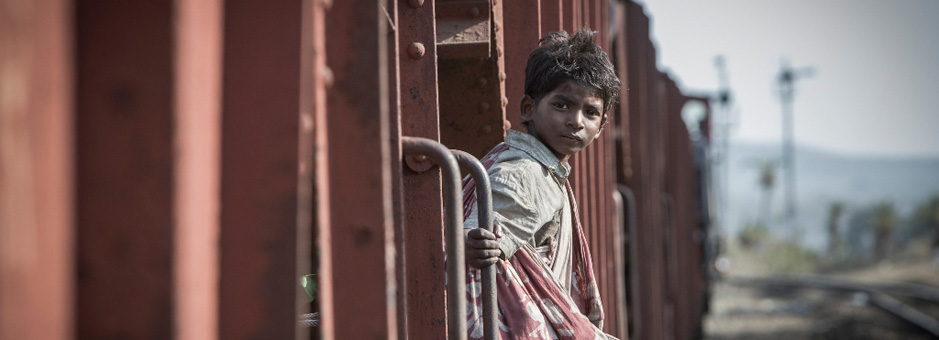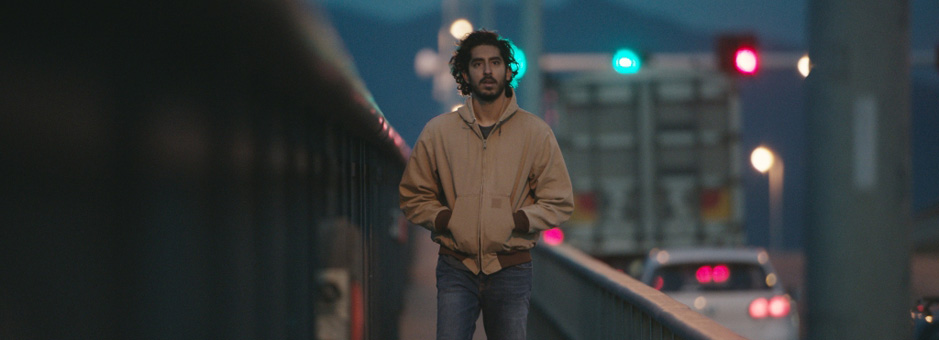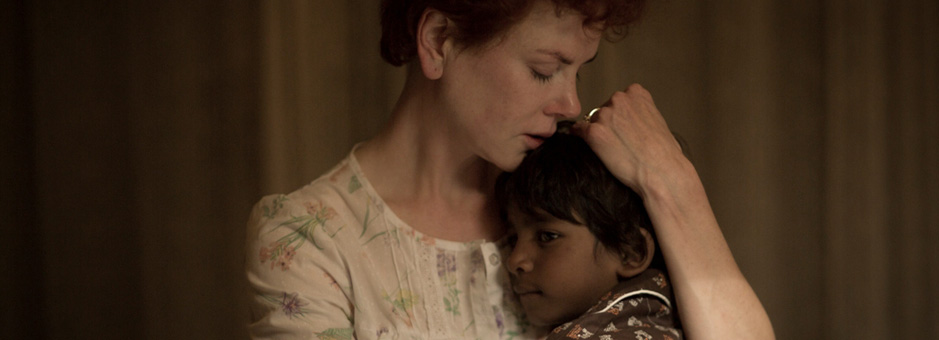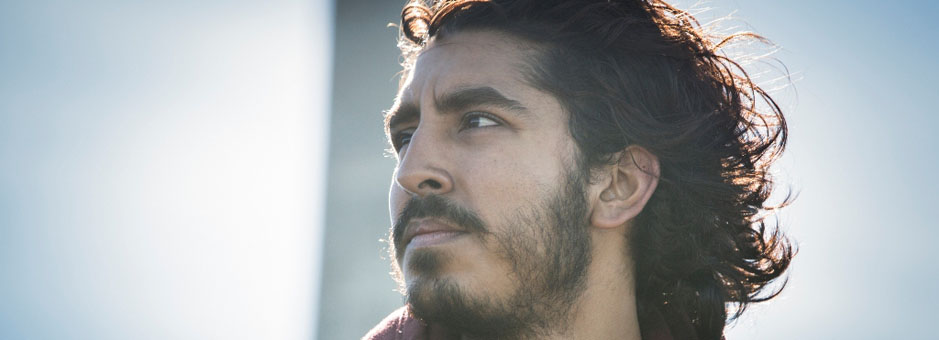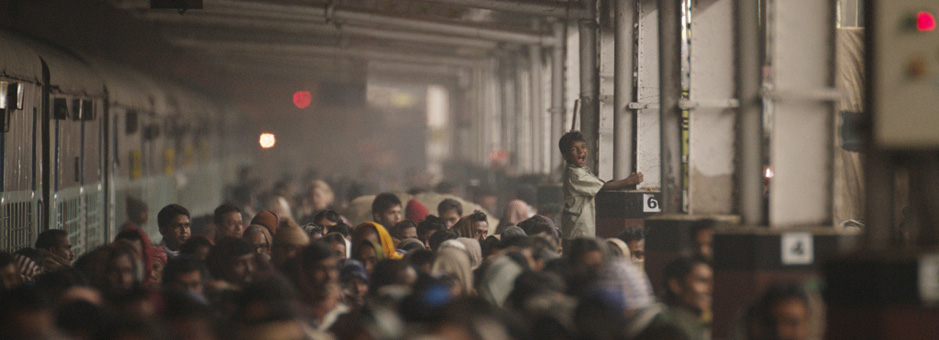Meet The Colourist
Olivier Fontenay
Colourist, Sydney
Olivier Fontenay is an experienced Baselight colourist whose credits include Lion, the recent blockbuster directed by Garth Davis. The heartfelt movie cuts across different settings, environments and cultures to show the raw emotions felt by Saroo (played by Sunny Pawar and Dev Patel), a young five-year-old boy lost on the streets of Calcutta far away from home, who is transported to Australia and has an agonising search for his family 25 years later.
Here Olivier talks to FilmLight about how he approached colour sensitively to create a natural look that supported the narrative of the movie.
Last year you finished the DI on Lion. How did you get involved in this project?
A few years ago I worked with Garth Davis on Jane Campion's series Top of The Lake and I was very impressed by his passion and how he believed in getting the details right. I also completed three features before with Greig Fraser, the DP – Killing them Softly, Last Ride and Bright Star – so I knew them both. I put my hand up saying “I want to work with you guys” and they said “sure”.
How did you decide on the look(s) for this movie?
There is a big time difference in the movie between what happens in India and what happens in Australia and also, of course, the locations are different. That affected the visual style but the aim was to make it look very natural while supporting the narrative. Really the idea was that the look is there to support the emotion, and in a way, the less you sense that you are seeing a specific ’look’, the better it is.
What were the main challenges in grading this film?
I would say it was how caring we had to be all the time for the characters, starting with what was happening in India. And a lot of the footage was on the edge of exposure and felt very soft in contrast – but it wasn’t actually too soft or too underexposed. So it was a very sensitive area to be in and a very thin line to walk – we were really working in the danger zone.
That's where I believe Greig deserved the Oscar nomination and the ACS Award because he was taking a risk – exposing down but not too much, almost to the point where you could see the noise when you were raising the brightness of the image. This meant I could pull the blacks down and really work on them. Because you can't actually see the noise but you can feel there is something there, you have the impression that you are seeing film grain. It doesn't look noisy, but it gives the image a special texture and feeling.
Then we had to replicate that for the video release, which is in a different colour space that goes against that look, so we spent a fair amount of time making sure that the grade was also right for the different video deliverables. But everything I’ve seen on TV or in print in magazines has been incredibly faithful to what we did, so from a colourist's point of view I can see that it did translate very well.
What part of the grading process do you normally spend most of your time on?
Setting the initial grade and letting my grade evolve with the story as it’s told. I'm not massive on secondaries, they come when they are needed. I always try to work with what I've got in front of me because I trust that what the DP shot is good enough to translate to emotion.
Were there any specific tools in Baselight that you found particularly beneficial when grading Lion?
Because I come from the photochemical world I started grading on digital systems using colour, density, contrast and then saturation – I could do a lot with that.
In Baselight I can work the same way with the film grade to give the base, but in addition I can use the video grade tools – lift, gamma, gain – to get to all the little nuances. The video grade is the only way I can lift the blacks a tiny bit without lifting the whole image or losing contrast because I like my highlights. So being able to separate my blacks, mids and highlights changes everything for me.
And being able to use the film and video grades in separate layers, and very quickly go from one to the other, means that I can work with my style of grading and really free myself from the machine. I can be quite intuitive with what I do and achieve a lot with very little – but when I need to go a bit further I've got all the other tools at hand.
I used softened shapes to separate one part of the image from another in a very ’loose’ way, which you cannot really see, to give something subtle to the image. They are incredibly quick – Baselight can do what I want without me really having to think about it and that was very important for me grading Lion, as I didn’t want a machine getting in front of my emotions.What cameras were used to shoot the film?
The main camera was the ARRI Alexa – we used the ARRIRAW files, plus they had some other cameras on the drones, and VFX as well, so there was a mix-and-match of different resolutions and file formats.
Can you tell me a little more about your collaborative work with VFX and editorial?
The visual effects were done at the studio Iloura, which I was able to work pretty closely with. They took the same RAW files that I had and worked with a graded reference, but then gave me back ungraded DPX files. It was a very transparent process.
We set up the Baselight job with one reel per scene and I basically just graded the film the way the story is told. I started at the beginning and finished at the end. The edit didn't change much during the DI because the cut was very close by the time I started grading. After that, the cut changes were mostly tweaks.
Could you say more about how you dealt with delivering for multiple formats?
The main deliverable was the P3 grade for cinema. For the HD version we spent a fair bit of time and found that we couldn't quite get it right in the blacks on certain shots. So we went back to the P3 and adjusted it in the film grade in order to be able to work accurately in HD, which actually benefited not only the HD version but also the film grade.
Was there a specific scene or sequence you found particularly enjoyable or challenging?
There isn't really any scene in the movie that was not either enjoyable or challenging but there is a scene between Saroo and his adoptive mother (played by Nicole Kidman) where he gives her a cuddle – with that scene it was very difficult to get the right amount of what you could read on his face. I also had to adjust Nicole's hair to make sure that the red was not overpowering.
When we first see Australia there is a different feel to the image compared to the contemporary Australia and this is basically in-between. It's got some of the softness and gentleness of the harsh Indian world but set in Australia, so you have stronger colours. When you move ahead to the contemporary Australia, it's more muted and normal so you can relate to it.
For me grading Lion was very enjoyable as it was really about letting the images be the support for my emotions, and this is one of the reasons why I love my job.
With Baselight I feel paradoxically free from the machine.
The built-in colour management is extremely powerful. To be able to use the machine to just grade and have it do what I want it to do by giving me everything back in P3 is great. If I’m asked to do a job with a mix of Red and Alexa and Blackmagic and dodgy stock shots, my answer is “sure, whatever!”. I just have to set it up right before I start working. Once that’s all done I don't have to worry about camera LUTs, I can just get on with grading.
Sometimes I can use an image in a colour space that it was not designed for and get so much more out of it – it gives me another space in which I can work.
In Baselight there is always a way to do what you want and quite often there are different ways, which means that the system can adapt to me and I can concentrate on the image rather than having to deal with the machine.
That's the biggest thing for me - that flexibility of the colour management plus being able to adapt Baselight to my way of thinking.
Soon I should be starting the grade on the Picnic At Hanging Rock TV series, made from the classic Peter Weir film. I very much look forward to being part of that project.
Join In
If you want to participate in our MTC programme, we'd love to hear from you. Contact:
Alexa Maza
e: [email protected]
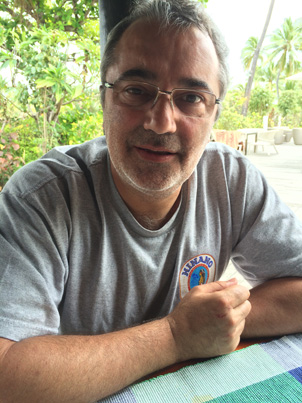
“Baselight can do what I want without me really having to think about it. That was very important for me grading Lion, as I didn’t want a machine getting in front of my emotions.”
Details
Colourist: Olivier Fontenay
Role: Colourist




